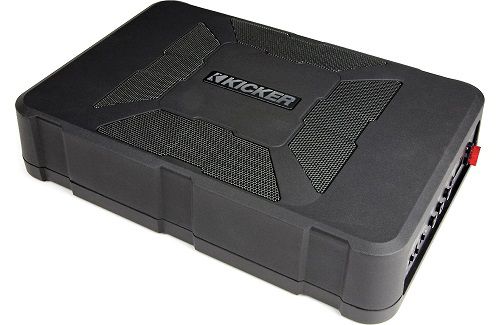One of the first things that come to mind while accessorizing your car is the music system. When you want to add a good level of punch and depth to your music, an underseat subwoofer can be a great choice. Having a high-quality subwoofer fitted under your seat can definitely add to your experience of listening to music while enjoying a ride in your car. Compared to the large subwoofers, the small under-the-seat subwoofers can pack in quite a few competitive advantages. Let’s take a look at the key advantages of buying an under-seat subwoofer.
An economical way to add bass to your sound system
Buying a subwoofer that is designed to fit under your car seat is one of the simple and cost-effective means of increasing the bass of your car music system. These compact units usually come with built-in amplifiers. An underseat subwoofer unit may not be able to perform at the level of a trunk-mounted subwoofer, but it will definitely get the job done for you as long as you don’t expect it to produce a thunderstorm of bass to fill your car interiors.
A compact solution to your music accessory space issues
When shopping for a subwoofer for your car, size is a key consideration. If the lack of space in your car’s boot is coming in your way of powering up your music system with some extra bass punch, a compact subwoofer unit is exactly what you want. These small subwoofers are created to fit into tight spots and get the job done for which they are designed. In other words, with a subwoofer unit that easily fits under your car seat, you can enjoy your music without having to compromise on your cargo space in the trunk. Regardless of whether you own a compact vehicle, a sports car, or a small pick-up truck, such a subwoofer system will definitely appease your musical appetite.
Easy to install and handle
Due to the under-the-seat mounting location of the small subwoofers, they may seem to be a bit of a hassle to install. But the fact is that these units are usually lightweight and portable and are specifically built to be fitted under your car seat. This makes them convenient to handle and install. One key advantage of their lightweight nature is that they do not weigh down your vehicle. What’s more, you can also remove such units effortlessly and transport them out of your vehicle whenever the need arises. Moreover, most of these compact units come with remote control. This makes your job of listening to music all the more convenient when you are on the go.
So, when you buy a subwoofer designed for under the seat mounting in your car, you get the benefits of reasonably good performance, low cost, and the ease of installation and removal (if and when required). On top of that, you do not have to allocate extra space for the subwoofer unit in your car trunk. What more do you want?
Read also:






















